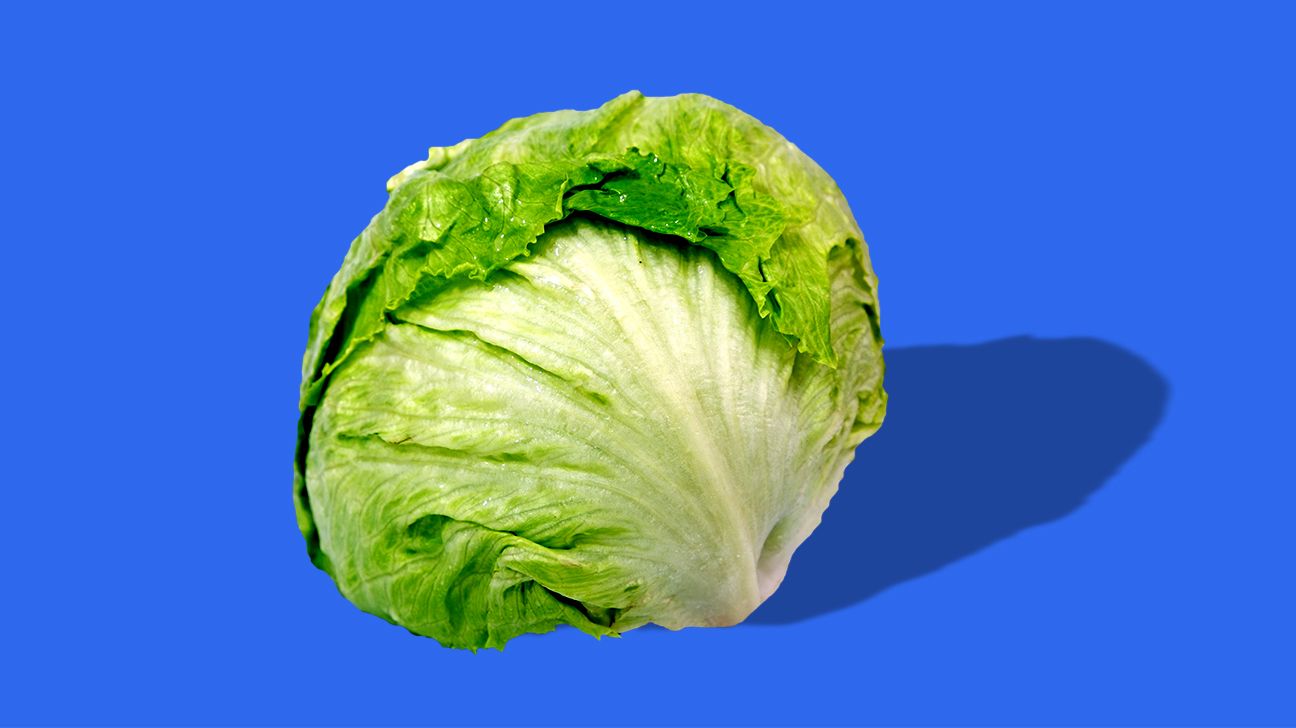If darker colors are generally a sign of more nutrients in fruits and veggies, where does that leave iceberg lettuce? The crisp, crunchy veg is a pretty pale green, and indeed, it’s not the most nutrient packed option out there.
But does that make it, like, not healthy? Here’s the lowdown on the benefits of iceberg lettuce.
What exactly will you get when you eat iceberg lettuce? Here’s a quick look at the nutritional facts. One cup of shredded iceberg lettuce delivers:
- 10 calories
- 2 grams of carbs
- 0.8 grams of fiber
- 0.6 grams of protein
- 0.1 grams of fat
Basically, the ‘berg is mostly water.
But that’s kind of a good thing. The fact that iceberg lettuce is super low in calories but high in H2O means that it’s a great option for making your meals bulkier.
And since volume is tied to satiety, it follows that using iceberg lettuce to round out a dish — like stuffing it into a turkey and cheese wrap or using it as the base for a taco bowl — could help you reach your weight loss goals.
Iceberg also offers small amounts of some vitamins and minerals:
- Provitamin A. Plant foods contain compounds called carotenoids that the body can convert into vitamin A, a nutrient that is critical for eye health and cellular growth.
- Vitamin K. This plays a key role in blood clotting and works with calcium to keep bones strong.
- Folate. This is a B vitamin used to build DNA and other genetic material. Folate also plays a role in preventing neural tube defects in babies, so it’s crucial for pregnant women.
- Vitamin C. An antioxidant that supports immune health and involved in the production of collagen.
- Potassium. A mineral that promotes healthy blood pressure.
So the lettuce has some good stuff going for it. But how does it stack up against other leafy greens?
TBH, it doesn’t pack as much of a nutritional punch. Let’s do a quick side-by-side of iceberg and its cousin romaine lettuce. Both serve up about the same amount of calories. But compared to iceberg, an equal amount of romaine delivers:
- 17 times more vitamin A
- 5 times as much folate
- nearly twice as much calcium
- over 4 times as much vitamin K
- twice as much magnesium
And other, darker leafy greens like kale, spinach, arugula, and watercress really blow iceberg out of the water.
Does that mean you should steer clear of iceberg? No way. Even if it’s not the most nutrient dense pick out there, it still counts as a vegetable. Plus it’s crisp and refreshing, and the mild flavor makes it super versatile in everything from salads to sandwiches to bowls.
So, if you love it, you should definitely keep on eating it. Just make it a point to mix it up with leafy greens that pack a bigger nutritional punch.
Throw a handful of baby spinach or kale into your iceberg salad, for instance. Fill your sandwich with arugula or watercress from time to time. Variety is the spice of life, people!
Looking for unexpected ways to get more iceberg into your life? Here are some tasty options to try:
- Use lettuce leaves as low carb wraps like these chipotle chicken lettuce wraps or steak and sriracha lettuce wraps.
- Toss thinly sliced lettuce into a stew like lentil, kale, and sweet potato stew. It’ll wilt just like heartier greens.
- Throw a handful into a smoothie. These pineapple avocado detox and green coconut pomegranate smoothies are already green, so the lettuce won’t change the color.
Iceberg lettuce isn’t exactly a vitamin and mineral powerhouse, but it’s far from nutritionally worthless. If you like it, there’s no reason not to chow down on a regular basis, provided you’re getting other greens in your diet as well.


